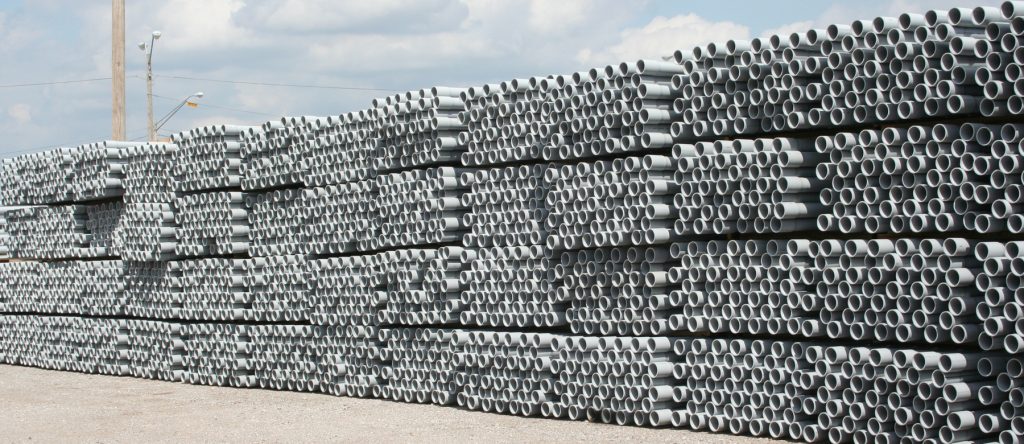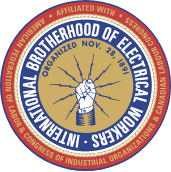When working on electrical systems and circuits, it is crucial to take every possible safety precaution. These systems have a dangerous amount of electricity running through them and even if the power to the system is turned off, there is still a risk of short-circuits, electrocution, and fires. The use of nonconductive materials in building or structural applications is a great mitigation strategy for electric shocks across jobsites.
There are several types of electrical conduits available made from different materials. It is important to use the right type of conduit for the specific project as using an electrical conduit that is unsuitable for the situation can put workers at risk.
In this guide, we will cover the main types of electrical conduit pipes used by linemen and utility workers. We will discuss the advantages and disadvantages of each as well as the types of situations each conduit pipe should be used. At Divergent Alliance, we provide wholesale electrical conduits, including fiberglass, PVC, and HDPE conduits from top manufacturers WL Plastics, Prime Conduit, Inc., and Champion Fiberglass.
Call Divergent Alliance at (847) 531-0559 or submit a contact form to get our volume pricing for electrical conduits.
What is an Electrical Conduit?
An electrical conduit is a tube in which electrical wires are housed for a variety of building or structural applications. Electric conduit pipe can also be used to provide protection for electrical wiring from things like moisture, impact, chemical vapors, and animals.
With multiple options for electrical conduits available, it is important to use the best conduit pipe for your specific project. The different materials of electrical conduits have different properties, and some may be more suitable for certain underground environments than others. Most electrical conduit pipes are made from metal, plastic, fiber, or fired clay.
PVC Conduits

PVC conduits are the lightest weight and least expensive electrical conduits, and they are non-conductive, so they protect well against electric shock. They are also durable, corrosive resistant, and can withstand various weather conditions and protect electrical wiring from moisture. PVC conduits come with elbows, fittings, couplings, and connectors and they can be assembled and held together with PVC glue.
There are two major drawbacks to PVC conduits. The first drawback is that they cannot withstand temperatures below about 20 degrees and above 140 degrees Fahrenheit. The second drawback is that if heat causes the PVC to melt or catch on fire, it will give off toxic fumes. While PVC conduits are a good option in most situations, you should avoid using them for a project in which they will be exposed to extreme heat or cold.
Traditional Metal Conduits
Traditional conduits are electrical conduits made from metal, typically steel or aluminum. These types of conduits are being phased out for more modern materials like PVC and fiberglass, but some may still use traditional metal conduits.
The following are the main types of metal conduits:
- Rigid metal conduit (RMC): Rigid metal conduits can be made from coated steel, stainless steel, or aluminum and they are thick and heavy. They provide excellent protection in harsh environments, but their weight and thickness make them expensive and difficult to install. They also have threaded connections which makes it more difficult to install wiring.
- Electrical metallic tubing (EMT): Electrical metallic tubing is lightweight and bendable, but it is best suited for indoor use instead of underground use because it can easily become damaged. These conduits should only be used for projects in which they won’t be at risk of physical damage.
- Flexible metal conduit (FMC): These metal conduits are produced using helical coiling to create strips of interlocked aluminum and steel. This makes them very bendable which is great for applications in which tight bends are needed. However, the installation of these conduits is more expensive and labor intensive because of their thick walls.
Fiberglass Conduits

Fiberglass conduits are becoming heavily used as underground electrical conduits because they are lightweight, cost effective, and resistant to elements like temperature and moisture. Fiberglass is non-metallic so it will protect from electric shock, and it will never corrode. It also provides excellent protection for electrical wiring and is cheap to install.
The following are the main benefits of fiberglass conduits:
- Low coefficient of friction which makes it easier to pull cables through
- Chemical resistant and resistant to corrosion and degradation from moisture, solvents, chemicals, and UV
- Can withstand extreme heat and cold without cracking or expanding
- Resistant to impacts and compression
- Non-conductive
- Lightweight
- Easy and inexpensive to install
HDPE Conduits

High-Density Polyethylene (HDPE) conduits are strong, flexible, and cost-effective to install. They are used in power utility distribution and telecommunication applications because they can protect electrical distribution cables and fiber-optic telecommunication cables from damage.
The following are the main benefits of HDPE conduits:
- Continuous lengths: HDPE conduits can come on reels for long, continuous lengths that eliminate the need for joints. These reels make it easy to transport and install HDPE pipe.
- Flexibility: HDPE pipe is highly flexible and can be bent to be routed in any way needed without cracking or snapping.
- Durability: HDPE conduits have a high impact resistance and can also withstand a broad range of temperatures and endure in the ground for long periods of time.
- Chemical resistance: HDPE material is resistant to harsh chemicals, moisture, corrosion, reactive minerals, and the decomposition of bacteria, fungus, and pests.
- Low coefficient of friction (COF): The naturally low COF means that longer pull lengths can be used with fewer manholes that are further apart. HDPE conduits are also receptive to lubrication if needed.
- Thermal resistance: HDPE conduits can house electrical cables with operating temperatures of over 190 degrees Fahrenheit and withstand temperatures as low as -40 degrees Fahrenheit.
Wholesale Electrical Conduits from Divergent Alliance
 Each type of electrical conduit described above has its advantages and disadvantages, but PVC, fiberglass, and HDPE are clearly superior to the traditional metal conduits that are being phased out. It is important to choose the right electrical conduits for the project that can handle the environmental conditions as well as the electrical wiring or cabling it must house and reroute. If you need below ground conduits for your projects, Divergent Alliance can help.
Each type of electrical conduit described above has its advantages and disadvantages, but PVC, fiberglass, and HDPE are clearly superior to the traditional metal conduits that are being phased out. It is important to choose the right electrical conduits for the project that can handle the environmental conditions as well as the electrical wiring or cabling it must house and reroute. If you need below ground conduits for your projects, Divergent Alliance can help.
Divergent Alliance supplies wholesale electrical conduits, including fiberglass, PVC, and HDPE conduits, that meet industry standards. We offer electrical conduits from major manufacturers including WL Plastics, Prime Conduit, Inc., and Champion Fiberglass.
Call Divergent Alliance at (847) 531-0559 or submit a contact form for volume pricing of our electric conduits. We can ship anywhere in the U.S.





